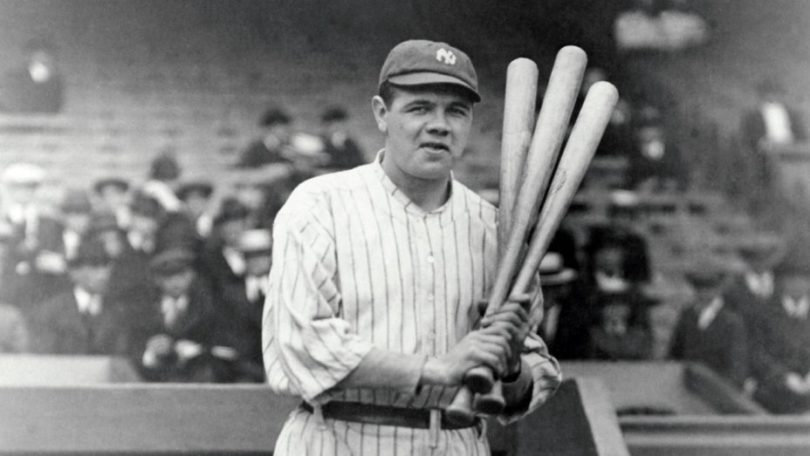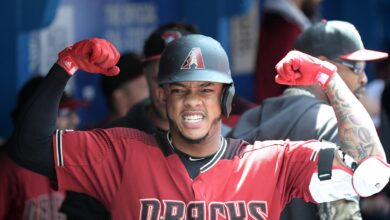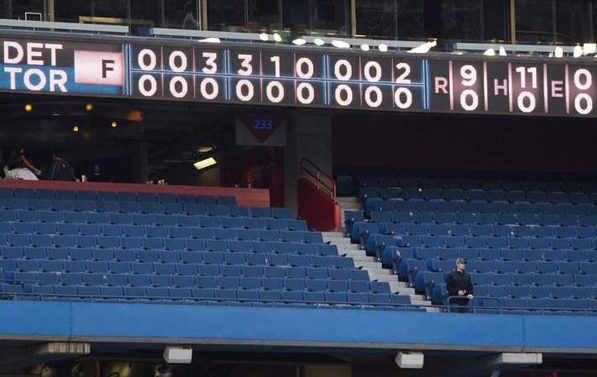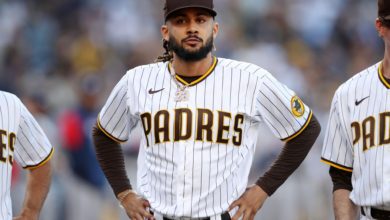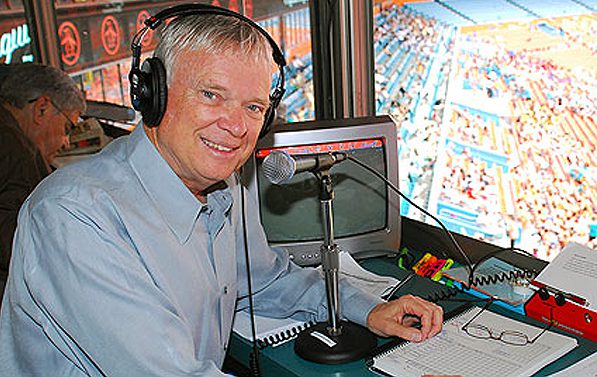
Have you ever seen a movie where the young boy in the family falls asleep to a baseball game on his transistor radio? Sure you have. In 1967, that kid was me.
“The count is two and two to Carl Yastrzemski,” Red Sox radio guy Ken Coleman would say on WHDH in Boston. “On deck is Tony Conigliaro.”
I was nine-years old, playing Little League baseball and following the Red Sox’ Impossible Dream season on the radio. I had been to one game at Fenway, with my friend Billy Ryder and his father. When Sox third baseman Joe Foy hit a grand slam into the screen in left, I didn’t know it was a home run. I’d never seen a screen like that before (or a left field wall like that). “What just happened?” I asked my friend’s father as Foy circled the bases.
Anyway, my one trip to Fenway gave me a clear picture in my mind for my nights with Ken Coleman.
This July, another exceptional baseball broadcaster, Marlins lead radio play-by-play man Dave Van Horne , will enter the Baseball Hall of Fame. No, not the broadcasters’ Hall of Fame, the Hall of Fame. The one in Cooperstown, New York. With Hank Aaron, Lou Gehrig, Bob Feller … and fellow broadcasters, such as Mel Allen, Vin Scully and Jack Buck.
Since 2001, I’ve been listening to Dave do Marlins games, sometimes in my car but more often in the courtyard of my condo in Boca Raton.
“It’s 81 degrees, the wind is out of the east-northeast at 12 miles an hour,” says the voice on 790 AM as the fans settle in to their seats and I open a 16-ounce can of Keystone Light. “It’s a very pleasant night for baseball here at Sun Life Stadium.”
On my little patch of grass, apart from the bicycles, the trash can, the hose and the grill, I sit on my Adirondack chair with my beer and my battery-operated portable radio on the table beside me. I’m joined by the night air, the clouds, the moon and my little black dog, Baby, who doesn’t really care who wins the game.
It’s fouled off to the left. The count goes to one-and-two.
This baseball season will make 43 as a major league broadcaster for Van Horne. Before joining the Marlins in 2001, he spent 32 years with the Montreal Expos—from 1969, the Expos very first season, to 2000.
Dave has called 11 no-hitters. He called the plays when Willie Mays, Tony Gwynn and Pete Rose got their 3,000th hits. Van Horne broadcast the Marlins’ 2003 World Championship season. And he witnessed from the booth the beginning of Pedro Martinez’s career, including his first Cy Young Award in 1997. (Do you remember Pedro pitching for the Expos?)
“Every night Pedro took the mound, you had the feeling something special might happen,” says Dave. “And very often it did.”
And at the end of six, the Marlins trail the Rockies three to one.
Baseball on the radio is rhythmic, repetitive and can be hypnotic. You enter a state of absentminded contemplation. Because you really don’t have to pay too much attention. You’re in and out. Like football, during a three-hour game, there’s only about a half hour of actual action on the field. That leaves two and a half hours for daydreaming, planning your weekend, thinking about the stock market and fixing your fantasy team.
Unlike football, you don’t have to watch or listen to the whole game—shoot, there are 162 of them. (Does anybody out there watch all 162?) You check in. You’re driving around doing an errand on a Wednesday night or a Sunday afternoon, and you tune in. Check the score. Who’s pitching? Oh yeah, Nolasco. How’s he doin’? Up 3-1 in the fourth. Not bad.
Up, up and away! It’s a homerun for Gaby Sanchez!
That’s Dave’s signature homerun call. I wonder how many times he’s said that phrase in 43 years.
Van Horne’s Marlins’ broadcast partner is the younger, but seasoned, Glenn Geffner. Geffner is in his fourth season with the Marlins and his 15th season in the majors. Before coming to Florida, he broadcasted Padres games and then Red Sox games, including Boston’s 2004 and 2007 championship seasons.
Coghlan is oh-for-two with a sacrifice fly in this one. He’s knocked in the Marlins only run.
Van Horne and Geffner trade off on the play-by-play duties. Van Horne does the play-by-play in the first three innings and the last three innings, while Geffner does the color. In innings four, five, and six, they switch – Van Horne does the color and Geffner handles the play-by-play. Then, the next night (or the next series), they switch again. And Geffner gets six innings of play-by-play, and vice versa.
The point is this: There’s not one color man and one play-by-play man. They both do both jobs.
No runs, one hit and one left. At the end of five and a half, it’s the Cubs three and the Marlins one.
I don’t have cable TV. So I really look forward to the Saturday afternoon game on Fox. Just like when I was a kid and waited for the NBC Saturday Game of the Week with former Yankee shortstop Tony Kubek, “the best analyst in the land,” according to a Sports Illustrated from back then. Yup, there was one game a week on TV.
So when I go to a sports bar, I not only get to see my beloved Marlins – Logan Morrison, Hanley Ramirez, Josh Johnson, et al. – on HDTV, I get to see four or five games at once. And a dozen or so young guys I’ve only read about and never seen play – Gordon Beckham, Dexter Fowler, Andrew McCutchen, Mike Aviles, Shin-Soo Choo and many more. For me, it’s orgasmic.
The pitch is low to Bonifacio. The count is one and one.
When the Marlins play on the West Coast, the night games don’t start until 10:00 p.m. Eastern time. So they don’t end until after 1:00 a.m. Sometimes on a slow Saturday around midnight, I put my radio next to my pillow, with the volume on low … and fall asleep to Anibal Sanchez, Mike Stanton, Leo Nunez … and Dave Van Horne.
Here comes the pitch. It’s high and outside for ball four, and Hanley has a walk …



